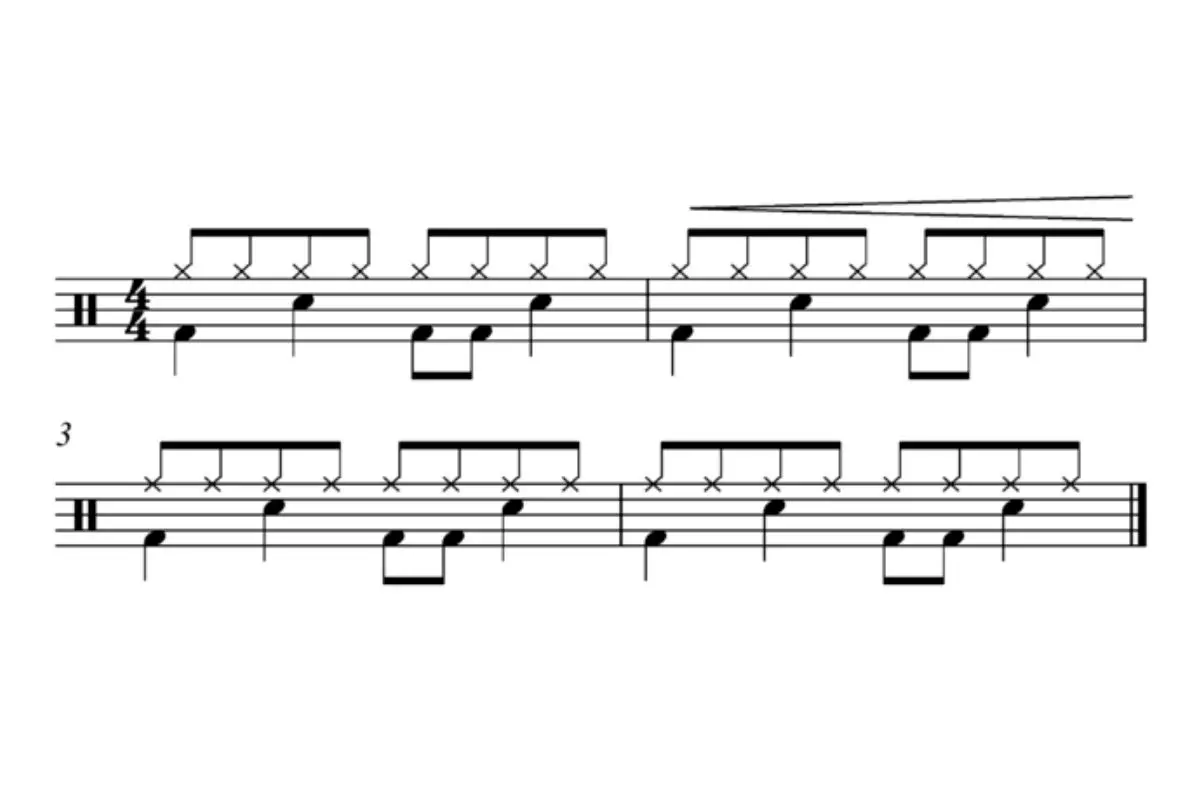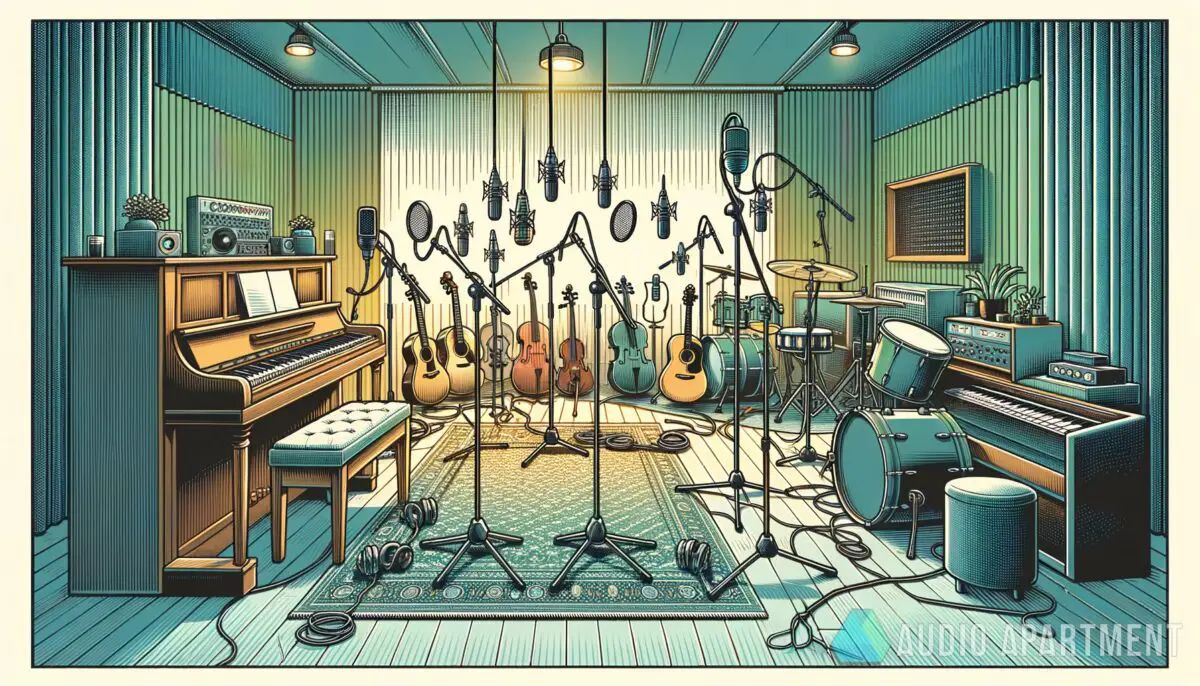Ready to crank up the volume and ride the waves of musical intensity? Have you ever wondered what a crescendo is and how it works its magic in music? Prepare to be swept off your feet as we unravel the secrets of this fascinating musical phenomenon. Can you hear it building?
What is a crescendo? A crescendo is a gradual increase in music volume, adding tension and excitement as the sound grows. It’s like a musical rollercoaster, taking you on a thrilling ride from whispers to booming climaxes, leaving you breathless and craving more.
What does the word “crescendo” mean in sheet music notation?
In the world of sheet music, composers use the word “crescendo” to indicate a gradual increase in volume. This term originates from the Italian word “crescere,” meaning “to grow.” When you come across the word “crescendo” in musical scores, it signifies the point where the music begins to get louder and more intense.

Importance of dynamic markings
To better indicate the crescendo’s intended effect, composers often include dynamic markings alongside the word “crescendo.” These dynamic markings specify the desired volume level the crescendo is building up. For example, you might see markings like “forte” (loud) or “mezzo-forte” (somewhat loud) to indicate the pivotal point of the crescendo passage.
Interpreting the crescendo marking
It’s important to note that not all musical passages include specific dynamic markings, leaving room for interpretation when encountering the word “crescendo” alone. In such cases, the performer or conductor has some freedom in determining the intensity and exact volume level of the crescendo. This allows for personal expression and musical interpretation.
Hairpin symbols for precise notation
Alternatively, composers may use hairpin symbols as a more precise form of notation for crescendos. These symbols resemble two intersecting lines that open outward to the right, representing the gradual increase in volume. Hairpin symbols provide specific information about the length of the crescendo and the desired volume at the beginning and end points.
Hairpin symbols provide specific information about the length of the crescendo and the desired volume at the beginning and end points.
Components often combine hairpin symbols with dynamic markings to give performers a comprehensive understanding of the desired dynamics. These markings indicate the desired volume level before and after the crescendo. For instance, you may see softer dynamic markings like “piano” or “mezzo-piano” to the left of the hairpin symbol, while louder markings like “forte” or “fortissimo” appear to the right.
It’s worth noting that dynamic markings and hairpin symbols may vary among composers and musical genres. So, it’s always essential to closely follow the composer’s instructions and consider the context of the musical piece.
AKAI Professional MPK Mini MK3

AKAI Professional MPK Mini MK3
How can you properly play crescendos?
Playing crescendos requires finesse and control to achieve the desired effect of a gradual increase in volume. Let’s explore some techniques and considerations to help you master the art of playing crescendos.
Gradual volume increase: Poco a poco
Remember the importance of a gradual volume increase to execute a crescendo effectively. Instead of letting a dynamic shift happen immediately, focus on gradually intensifying the sound. Composers sometimes include the Italian term “poco a poco,” meaning “little by little,” on scores to emphasize this point. Extending the dynamic change over the full length of the musical passage creates a more nuanced and expressive performance.
Differentiating sudden volume changes
It’s essential to differentiate between crescendos and sudden volume changes in the music. While crescendos involve a gradual increase in volume, composers use specific dynamic markings like sforzando (sfz), sforzato (SF), forzando (fz) to indicate sudden and forceful volume shifts. When encountering crescendo markings, remember to focus on the gradual increase rather than a sudden jump in volume.
Control of the instrument’s dynamic range
To play crescendos effectively, you need to have control of your instrument’s dynamic range. This means adjusting the volume smoothly and precisely, from soft to loud. Practicing dynamic control exercises can help you develop the necessary technique and finesse to confidently execute crescendos.
Understanding how to play crescendos is crucial for musicians and producers working in their home recording studios. You can skillfully execute crescendos in your recordings to add a dynamic and expressive touch to your music.
To help you navigate the world of crescendos and make the most out of your home studio productions, here’s a table of “dos and don’ts” to keep in mind:
| Dos | Don’ts |
|---|---|
| Gradually increase volume | Make sudden, jarring volume shifts |
| Practice control of a dynamic range | Rush through crescendo passages |
| Practice control of dynamic range | Neglect dynamic variations |
| Experiment with different passages | Overuse crescendos excessively |
Remember, achieving mastery takes practice and patience. Embrace the journey of incorporating crescendos into your music and enjoy the thrilling results they bring to your recordings. Happy music-making!
How can the understanding of crescendos enhance home recording studios or music production?
In the world of home recording studios and music production, a solid understanding of crescendos can significantly impact the quality and emotional depth of your productions. Let’s explore how incorporating crescendos can elevate your music to new heights.
Creating dynamic and engaging productions
By utilizing crescendos effectively, you can create dynamic and engaging productions that capture the listener’s attention and evoke powerful emotions. The gradual increase in volume adds tension, anticipation, and excitement to your tracks, guiding the listener through a musical journey. Whether you’re producing a pop song, a film score, or an electronic dance track, crescendos can help elevate the overall impact and captivate your audience.
Establishing build-ups and climaxes
Crescendos serve as powerful tools for establishing build-ups and climaxes within your compositions. They allow you to craft moments of intensity and release, building anticipation and creating a cathartic impact. By strategically placing crescendos at crucial sections of your music, you can enhance the overall structure and dynamics of your compositions.
Emphasizing transitions and musical narratives
Crescendos also play a crucial role in emphasizing transitions and shaping musical narratives. Whether transitioning between sections, introducing new melodies, or building up to a key moment, crescendos can serve as musical signposts, guiding the listener through the progression of your composition. They enhance the emotional impact of transitions, helping you tell a story through your music.
Utilizing a variety of instruments and techniques
When incorporating crescendos in your productions, you have a world of creative possibilities at your fingertips. Experiment with a variety of instruments, including strings, brass, synths, or even vocal harmonies, to achieve unique and impactful crescendos. Additionally, you can explore different production techniques such as automation, layering, and dynamic processing to further enhance the gradual increase in volume.
To make the most out of crescendos in your home recording studio or music production endeavors, consider the following suggestions:
- Plan and arrange: Before diving into your production, plan where and how you want to incorporate crescendos in your compositions. Map out the sections that could benefit from increased intensity and impact.
- Experiment and explore: Embrace the creative process and explore unique ways to implement crescendos that align with your artistic vision.
- Practice dynamic control: Develop your skills to ensure a smooth and natural transition during crescendos. This includes practicing instrument-specific techniques and understanding the nuances of volume changes.

What are some of the crescendo implementation techniques in music production?
The table below presents a comparative analysis of various crescendo implementation techniques commonly used in music production, specifically focusing on their application in home studio recording and audio engineering, seeking to enhance their sonic creations with powerful crescendos.
| Technique | Description | Application |
|---|---|---|
| Automation | Utilizing automation tools to control volume parameters | Ideal for precise control and shaping of crescendos |
| Layering | Layering multiple tracks or instruments to build intensity | Effective for creating rich and impactful crescendos |
| Dynamic Processing | Utilizing dynamic processors to enhance volume changes | Useful for adding depth and clarity to crescendos |
| Instrumentation | Utilizing specific instruments known for dynamic range | Allows for expressive and nuanced crescendo passages |
| Creative Panning | Placing sounds across the stereo field to create movement | Adds spatial depth and immersive qualities to crescendos |
What are the advantages and disadvantages of utilizing automation for crescendos?
Automation is a powerful technique widely employed in music production to control various parameters, including volume, and shape the dynamics of composition. Let’s explore the advantages and disadvantages of utilizing automation specifically for crescendos.
Advantages
- Precise Control: Automation allows for precise control over the gradual increase in volume, enabling producers and engineers to craft crescendos with meticulous detail.
- Dynamic Shaping: By automating volume changes, producers can shape the dynamics of a crescendo, enhancing the emotional impact and overall musicality.
- Consistency: Automation ensures consistency in the execution of crescendos across different sections and takes, providing a polished and professional sound.
Disadvantages
- Complexity: Utilizing automation can be complex, requiring a deep understanding of the software or hardware tools involved. It may take time and practice to achieve desired results effectively.
- Time-Consuming: Automating crescendos may involve meticulous editing and fine-tuning, which can be time-consuming, especially when working on intricate and elaborate compositions.
- Limited Human Expression: While automation offers precision, it may lack the subtle nuances and human expression that can be achieved through live performances or manual volume adjustments.
When utilizing automation for crescendos, it is essential to strike a balance between precision and the organic qualities of a musical performance. Experimentation, practice, and an understanding of musical intent are key to utilizing automation effectively and achieving desired sonic outcomes.
If you want even more great tips and information, check out the video.
Frequently Asked Questions (FAQ)
Below are some FAQs about crescendos and their implementation:
Can crescendos only be used in classical music?
No, crescendos are not limited to classical music. They are widely used in various musical genres, including jazz, rock, pop, and electronic music. Crescendos add dynamics and emotion to music, making them versatile tools for composers and producers across different genres.
Are there any specific instruments that work best for creating impactful crescendos?
While crescendos can be executed on any instrument, certain instruments are known for their dynamic range and expressive capabilities, making them ideal for creating impactful crescendos. Instruments such as orchestral strings, brass, and synthesizers offer a wide range of dynamics, allowing musicians and producers to achieve powerful crescendos.
How can I ensure my crescendos sound natural and seamless in my recordings?
To ensure your crescendos sound natural and seamless in recordings, focus on achieving smooth and gradual volume changes. Practice controlling the dynamic range of your instrument, utilize automation techniques, and pay attention to the transitions leading into and out of the crescendos.
Aim for a cohesive and organic flow throughout the musical passage to create a convincing and immersive listening experience.
Conclusion
And that’s a wrap! We’ve explored the ins and outs of crescendos in music production and learned how they can elevate our sonic creations. Now, let’s crescendo toward the conclusion with a lighthearted note. I hope this article has provided you with valuable insights and practical tips for incorporating crescendos into your music.
Let me know your questions in the comments section below (I read and reply to every comment). If you found this article helpful, share it with a friend, and check out my full blog for more tips and tricks on music production. Thanks for reading, and may your music soar to new heights with captivating crescendos. Keep creating and rocking on!
Key Takeaways
This article covered the topic of crescendos in music production, exploring their definition, notations, playing techniques, and their significance in enhancing home recording studios or music productions. Here are some key takeaways:
- Crescendos involve a gradual increase in volume and are not limited to classical music.
- They can be notated using the word “crescendo” or symbols like hairpins.
- Playing crescendos requires gradual volume control and attention to dynamic shifts.
- Crescendos add dynamics, emotions, and impact to music, enhancing the overall listening experience.
- Automation, layering, and dynamic processing are techniques for implementing crescendos in music production.















